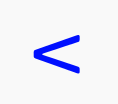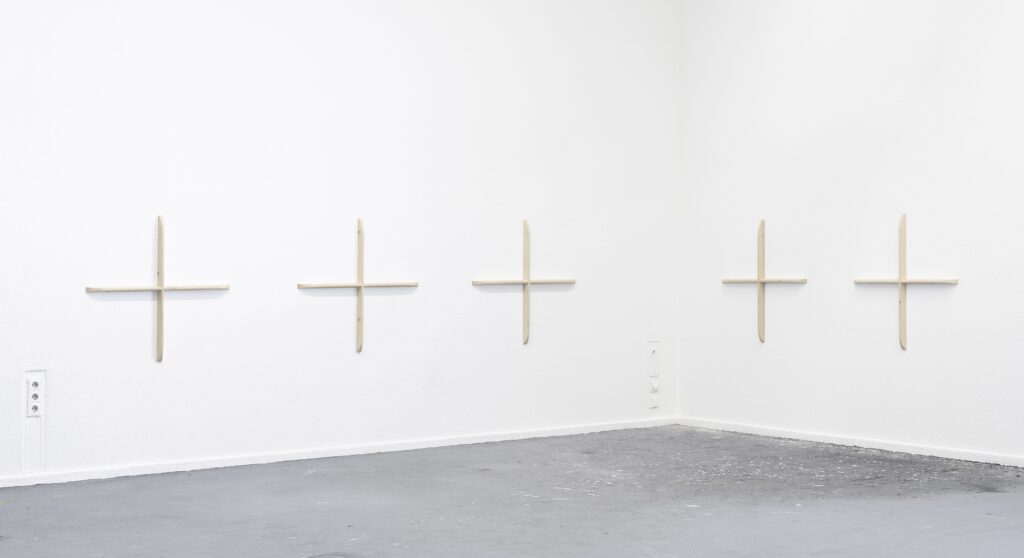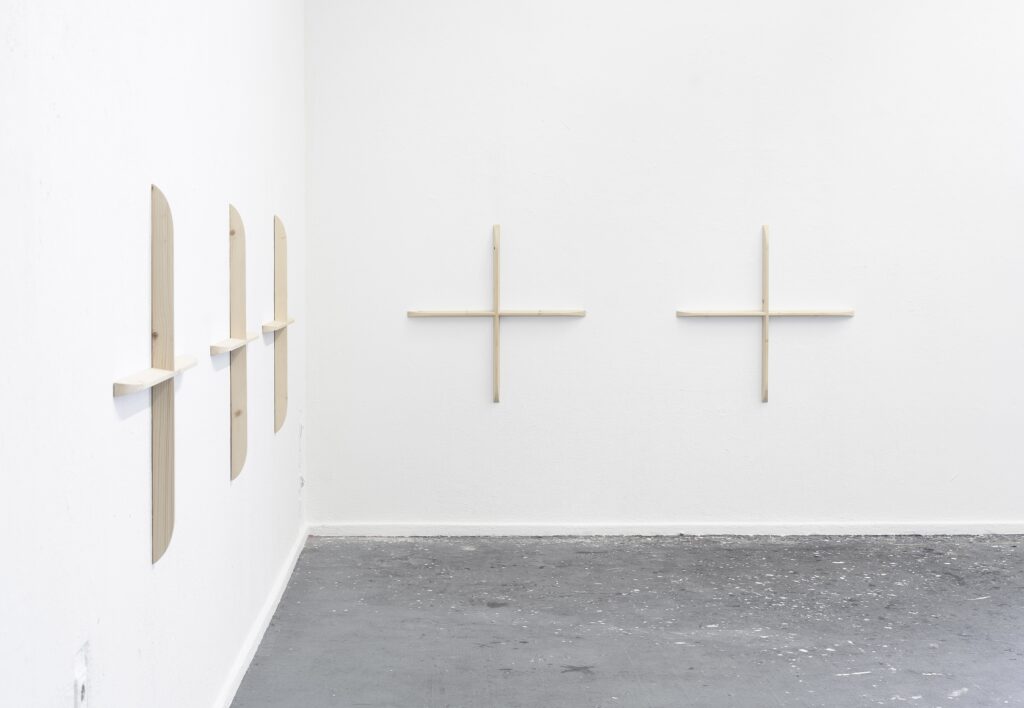



Five crosses made of spruce wood, 96 x 96 cm
Cross(Spruce) 2023
Five isosceles crosses made of light spruce wood, each measuring 96 x 96 cm, hang in a line in the room. Their placement at exactly 140 cm is deliberately chosen. Their presence is clear and reduced, characterized by simple perfection reminiscent of Scandinavian design. They do not demand, they do not cry out and yet they are there. Those who approach them look downward, embraced by their arrangement. They do not stand against the viewer but allow them to be with the space. Like registration marks in print, they guide the gaze, leading it through the room and inviting contemplation.
This work stems from a formalist intention. It presents a form and yet meaning is inescapable. The cross is one of the oldest symbols in human history, and hardly anyone remains untouched by it. Each person brings their own story, each observation becomes an individual experience: For some, the work is charged with meaning, for others, it remains a purely formal construction.
Yet this is neither a relic of the past nor a sign of the future. It is no ideology but simply what it is: Two lines intersecting at a right angle. An object in space that, in its construction, may resemble a piece of furniture or appear as a picture on the wall. Nothing more than form and material and in this reduction, open to any interpretation.
Kreuz(Fichte)2023, Fünf Kreuze aus Fichtenholz 96 x 96cm
Fünf gleichschenkelige Kreuze aus hellem Fichtenholz, je 96 x 96 cm groß, hängen in einer Linie im Raum. Ihre Hängung auf exakt 140 cm ist bewusst gewählt. Ihre Präsenz ist klar und reduziert, geprägt von schlichter Perfektion, die an skandinavisches Design erinnert. Sie fordern nicht, sie schreien nicht auf und doch sind sie da. Wer sich ihnen nähert, blickt hinab, wird von ihrer Anordnung umfangen. Sie stehen nicht gegen den Betrachter, sondern lassen ihn mit dem Raum sein. Wie Passmarken im Druck lenken sie den Blick, leiten ihn durch den Raum und laden zur Betrachtung ein.
Die Arbeit entspringt einer formalistischen Intention. Sie gibt eine Form vor und doch ist Bedeutung unausweichlich. Das Kreuz ist eines der ältesten Symbole der Menschheitsgeschichte, und kaum jemand bleibt davon unberührt. Jeder Mensch bringt seine eigene Geschichte mit, jede Betrachtung wird zur individuellen Erfahrung: Für manche ist das Werk aufgeladen mit Bedeutung, für andere bleibt es eine rein formale Konstruktion.
Doch dies ist weder Reliquie der Vergangenheit noch Zeichen der Zukunft. Es ist keine Ideologie, sondern das, was es ist: Zwei Linien, die sich im rechten Winkel kreuzen. Ein Objekt im Raum, das in seiner Bauweise an ein Möbelstück erinnern mag oder als Bild an der Wand erscheint. Nichts weiter als Form und Material – und in dieser Reduktion offen für jede Deutung.
